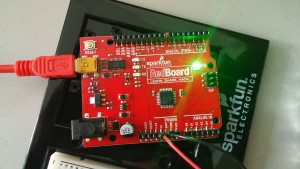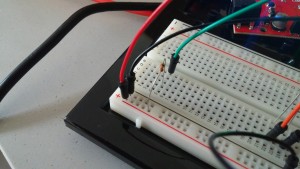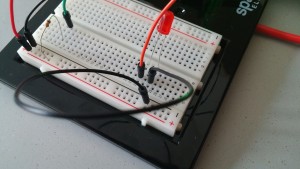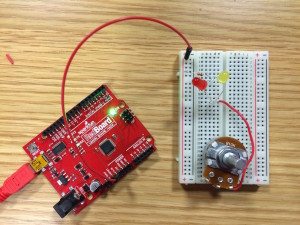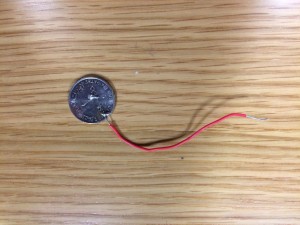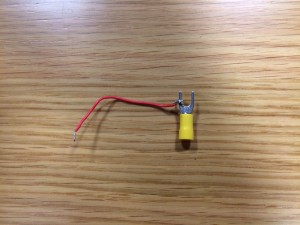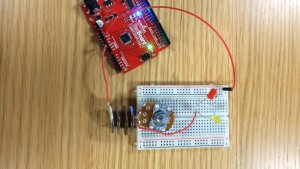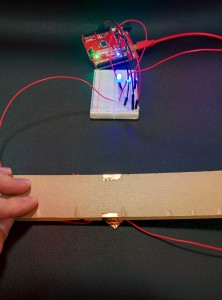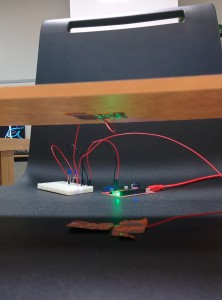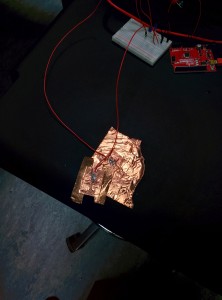I am part of a subgroup of students known as the StudyAways (well we call ourselves that) and we compose of several NY students and Shanghai students. We absolutely love the campus and simply how everything is free. However, whenever we go on and on about what we love about this campus, there is always that “but” at the end of the sentence. The campus is in the middle of a desert in the middle of an island miles away from a city that we can see in the distance but never feel like we have easy access to. And although we have shuttles to take us to and fro, we find ourselves competing with other students and if any of our fellow StudyAways get late, they get left behind as we wave goodbye from the window. Most of us are used to our campuses being surrounded by vibrant places to visit and things to do that is only a walking distance away. Now before you say anything, I know there’s not much the University can do. Some may say that the shuttles are the University’s acknowledgement to the fact that there is a considerable distance from us and civilization. But it is one thing that stands out to a lot of us. Perhaps in the years to come, when Abu Dhabi becomes more developed and those museums are completed, the campus will be surrounded with people from all over the world and small businesses that don’t require us to take a shuttle so packed that we need to pull that awkward extra seat in the middle of the aisle down. When you look out your window and see sand for miles right outside the campus, just imagine what coffee shops, convenience stores, fresh food markets, pubs, creperies and other food places could take it’s place.
Category: [Old] Your Work
Key Bowl
Imagine this:
You’re coming home after a long day, and as soon as you enter you place your keys in a bowl by your door. But this is no ordinary bowl. The very second your keys touch the bowl, your lights turn on!
Well I’ve made something like that on a much smaller scale.
I’ve made a bowl that has nearly two conductive halves that, when connected with something that can conduct electricity, closes the circuit and turns on the LED. Kind of looks like this:
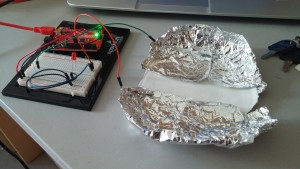
I know, not the fanciest looking bowl out there. But it works! And I can see it being useful to many people.
Here’s a video to prove it:
Update: The blue wire in the video was an extra unnecessary wire between the red wire and the LED. I have since removed it. Please ignore it as the following section does not acknowledge it. Thank you.
The way it works is actually very simple, and I’m sure you all could figure it out. But I’ll explain it anyways.
First things first, you set up the RedBoard and connect the power and ground wires.
Then I place a resistor there to decrease the Voltage to the green wire which is connected to one half of the plate:
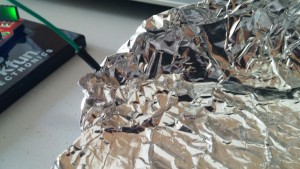 The Aluminum foil was the most versatile conductive material I could find, so it serves my purpose well. I left a gap in between the two aluminum foil halves so we are left with an open circuit that would need the keys (or any other conductive material) to close. The other half has a red wire that connects back to the bread board.
The Aluminum foil was the most versatile conductive material I could find, so it serves my purpose well. I left a gap in between the two aluminum foil halves so we are left with an open circuit that would need the keys (or any other conductive material) to close. The other half has a red wire that connects back to the bread board.
The red wire is hooked up to the same row where the LED is and continues to the black wire that connects to ground, indicating the end of our circuit.
So all we really need for the Greenies to reach the party are the car keys. Give em the car keys and they get ballistic and immediately power up the LED.
Coin Domino
When I first saw the assignment, I thought about three ways of making a switch that doesn’t require the use of hands:
- Ride a bicycle over two metal panels on the ground and press them together.
- Make light-weighted, conductive material touch by blowing wind to them.
- Flip a coin, make it spin, and when it stopped use it as a conductor between two wires.
I never really tried the first idea primarily because I don’t have a bike. Then it would also be hard trying to find spare, large metal panels. Blowing wind to conductive material seemed more feasible, and I brought my wallet with some coins in it to the lab. I tried with flipping coins and had a lot of fun aiming them at a certain target. But my coins are hardly controllable once they left my hand… oops, does flipping a coin means the use of hand? I realised the third idea doesn’t meet the criteria of the assignment. After some thought, I decided to combine the second and third project by blowing to a Domino set of coins, making them touch to serve as a switch.
So first I set up the Redboard and breadboard, added a red and a yellow LEDs, and cut off two pieces of wires. Then I soldered one end of a wire to a potentiometer and placed them on the breadboard like this:
The most difficult part was connecting another wire. I first tried to solder the wire with a coin. However, due to the high melting point of the coin, I couldn’t solder them together tight. Then I tried to solder with another small, light object that I randomly found in the lab. It still didn’t work well.
After spending much time on soldering and not nailing it, I decided to simply go with tapes. I taped the end of the other wire to the first coin in my Domino and arranged all four coins.
Finally I experimented a few times blowing wind to the first coin and making all four collapse. They seemed to touch alright, but not always fell to the right place and light up the LEDs. Playing with my coin domino was kind of fun though. Here’s one of the videos I made when the coins did the right job.
There are definitely many ways of making this coin domino switch look and function better. Adding more coins and rearranging them, refining the connection of wire and coin, as well as using stuff other than the potentiometer could all help.
A Hole Puncher Switch
For this week’s assignment, I made a switch with the help of a hole puncher. The main idea is to use the metal cutting poles that cut the paper after you press the hole puncher. Here’s a link about how a hole puncher works in slow motion.
Project Dorothy
My setup is pretty basic: when I click my heels together, the light turns on.
I soldered the ends of two wires to two small pieces of conductible fabric. Those then are taped to the inside heels of my shoes. It worked on the first go, so this was a very smooth project. I am going to fiddle around to see what else I can do since this was fairly easy. Either way, here’s a video showing it work below. The overall circuit is completed on the breadboard, with two longer wires extended out from the power and resister and the light. Once the two wires connect, the switch closes the circuit. The conductible fabric was used in part to make the circuit easier to connect with more surface area, and also because I wanted to practice soldering (it was a messy job because the fabric melted as I was soldering (whoops)).
Bucket activated switch
First of all, the video of my switch working can be found here. Thanks to Mariko for filming the clip. My switch works as follows. A sheet of flexible material is suspended between two level structures. This spanning piece has a wire, soldered to a piece of copper tape fixed to the bottom. Underneath this there is another structure, at a lower level than the two holding the spanning piece, which has another wire/copper combo fixed to it. When the wire on the lower structure and the flexible span meet, they complete the circuit, making the lights turn on. Instead of pressing on the flexible sheet with my body, I instead placed a bucket on top of the spanning sheet and filled it up with water until the sheet flexed enough to complete the circuit. In practice, the two structures that held the spanning sheet were two tables in the IM lab. The third, lower structure was an adjustable height chair, and the spanning piece was a sheet of translucent plastic (covered on both sides with some paper covering) I found at one end of the lab. Below are a few close-up pictures illustrating different parts of the setup. The first shows me pressing down on the plastic spanning piece, completing the circuit. The second shows the underside of the plastic spanning piece, and the chair mounted part of the circuit. The third shows off my sick nasty soldering skills. The fourth is the circuit diagram for this project I made using this Python module.
Where am I?
Finding our way to an unknown place – let it be a town, a house, a shop, or a classroom in a vast edifice – can be a challenging task. Maps have been there to aid us navigate for thousands of years, yet we still regularly find ourselves struggling with directions, getting lost and hence even being late.
Maps contain valuable information about where we are, they guide us to our destination. However, traditional, paper-based maps often fail to serve as a good interface for communication. They (usually) cannot tell you where you are at, their representations of various streets or buildings can be hard to read, and most of the time you need to scan through the whole image yourself in search of the address, shop or room you are looking for. Even though re-designing a map can improve its ‘legibility’ easily and significantly, the task of locating your destination on the map and selecting the shortest path that leads you there will still remain time-consuming. Moreover, even a superb, easy-to-understand layout will have limitations on the amount of information it can convey. No paper-based map will be able to provide you with pictures of all the significant buildings (schools, museums etc) in the city, or of all the shops within a mall.
This is exactly where interactive media can come to picture. By now, digital maps, or rather, digital information stations, have become the main device to help us find our way in not only malls but also often in city centres. Their interactivity enables the users to search for their destination, and they clearly indicate the shortest path, thus saving us time. Moreover, digital information stations as an interface allow for the communication of much more information than maps do: instead of solely showing us the way, they can display images, this way providing more visual information to ensure that we get where we intended to.
However, some aspects of the application of this interface also often pose new obstacles on the users. The most obvious example is that even though malls’ information stations allow users to search for shops, they usually do not allow them word-search but categorise the shops instead. This means no problem if we are looking for a bookstore and the display has the option ’Bookstores’ but what if we are looking for the location of one specific restaurant amongst the 20+ restaurants that appear on the display after we press the ’Restaurants’ label? We have to scan through the list just as if we had to scan through the image of a map printed on a board. This is exactly where the implementation of interactive media to everyday interfaces needs to be enhanced – by, sticking with our example, enabling word-search, or in general, by putting practicality and user-experience in focus.
Opening stupid locked doors
I struggle at opening doors. In public bathrooms it is really disgusting for me to open the door after washing my hands. As shown in the video above, to be able to open a door at any of the single bathrooms at NYUAD you have to touch not only the handle but also the lock, making the process inefficient and annoying.
Other doors on campus, however, are designed so the handle itself can control the lock. The following video show how it works:
However, there’s still a lot of room for improvement in finding a hygienic and efficient way of opening doors. Using motion sensors, computer vision and microprocessors it is possible to avoid direct touch of surface covered on microbes and to open the doors automatically.
The Best Time to Eat
As some of the posts are about having to wait in the dining hall, I thought about it and came up with a different solution that might work. and here is how it goes:
So, we set up a camera that has a sensor for motion to the entrance. That will count how many people go in and go out. The number of people in the dining hall is calculated and can be notified through a smartphone app. So we can see roughly how crowded the dining hall is at the time and decide to go then or later.
Additionally, after installing this system, the data will accumulate which can then be used to calculate and predict the time when the dining hall is crowded or open.
This solution alone may not stand effective, but at least this should improve the condition right now and lessen the stress of having to wait for the line.
We don’t want to wait
I have to bring two objects every day when I’m in NYU Abu Dhabi. Guess! Books? Water? Sunscreen? No, they are ID Card and room card. We need to use ID Card to enter buildings and pay for our meals. The same, room card is used to enter our dorm, or you’ll enjoy a moment with public safety. It seems that we can not move normally without our cards.
Almost every day in the dining hall, there are two long lines of people waiting to pay for their meals. I am always imaging that can I pass the cashier in one second by using super power? You can see, the time to wait is relatively long when we are hungry.
Then I did an experiment at 7:00 P.M. in our East Dining Hall. I counted the number of people who finished paying and left cashier desk in one minute. The result shows that the average number is 3. It means if there are nine people in front of you, then you need to wait for three minutes. The time is not long, but can it be shorter? Or what can we do to shorten the time?
The process of paying is easy. Cashiers see what you bought, then input information to the machine, swipe your card and output. Compared with traditional trade in the street, we all have cards. The ways that people take them out are really different. I saw some people take their wallets and purses out of bags first, and then take their cards from them. Some people directly take out their cards in their pockets. Some people hold their wallets and purses with cards. After their paying, it seems there are many objects in their hands. The different ways of taking out cards sometimes costs different time. Besides, we are supposed to be polite and kind, we greets the cashiers we meet, it spends time. in addition, machines work more and more precise and smart, sometimes, the time increases. Interface changes from simply people to both people and machine, from one object to many.
Whether the easiest way to shorten the paying time is to simplify the process? Yes? No? I don’t have answer, but it is my question.

